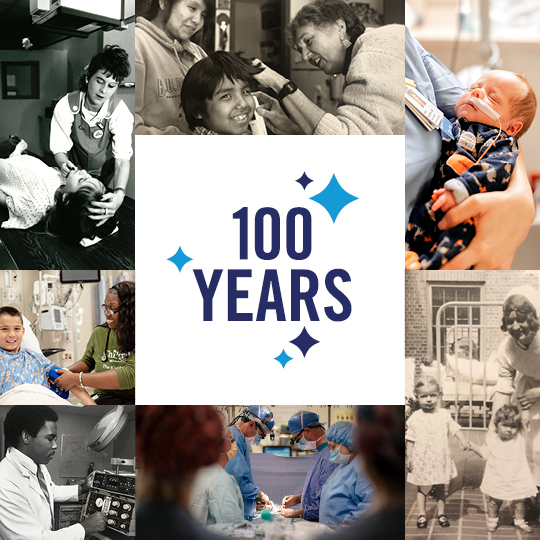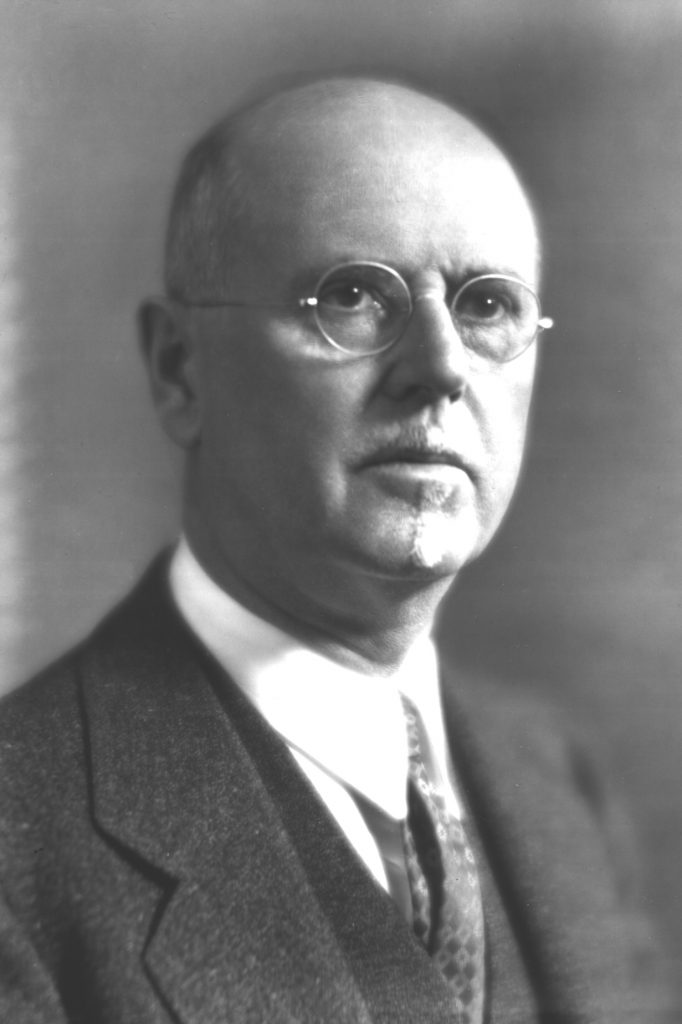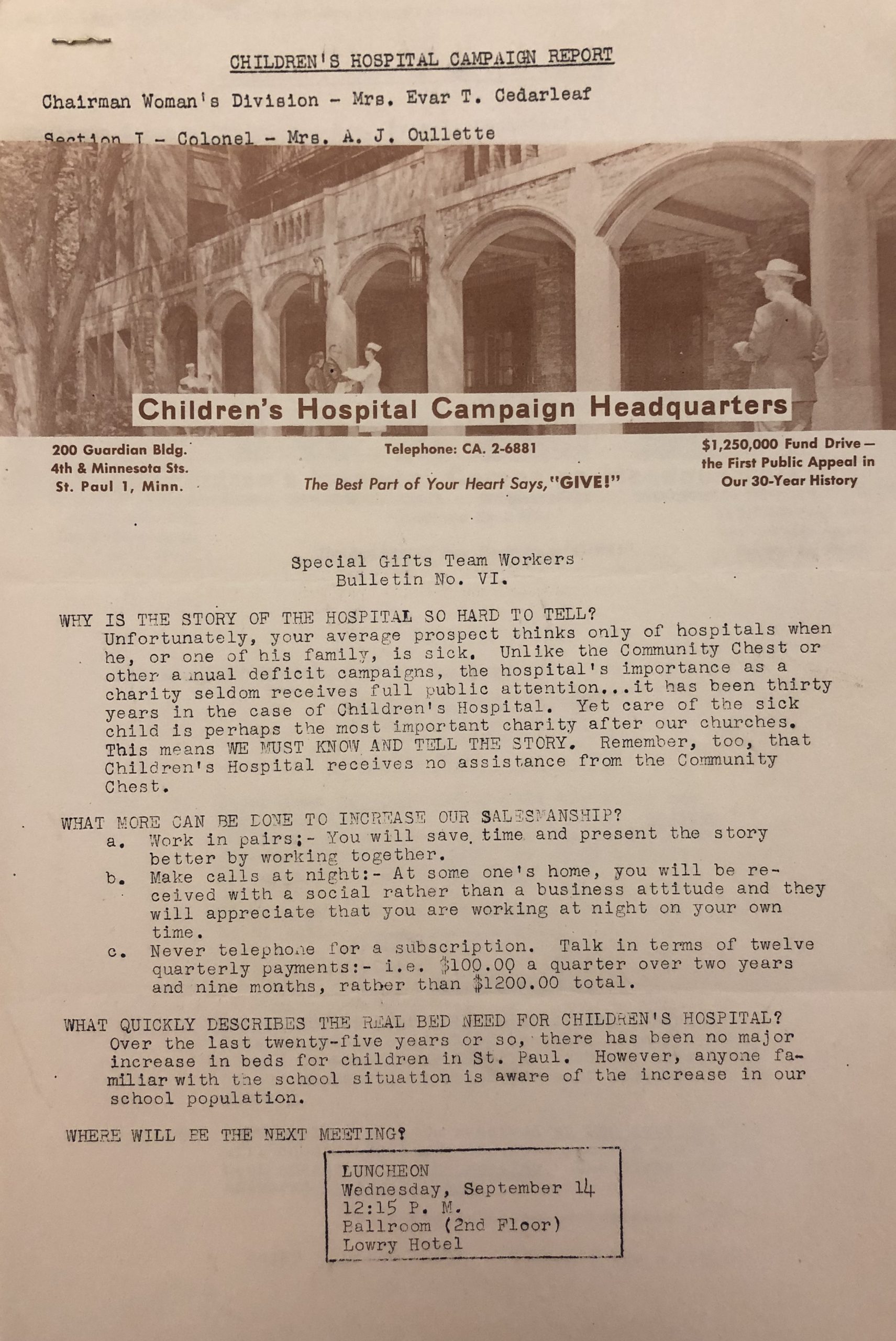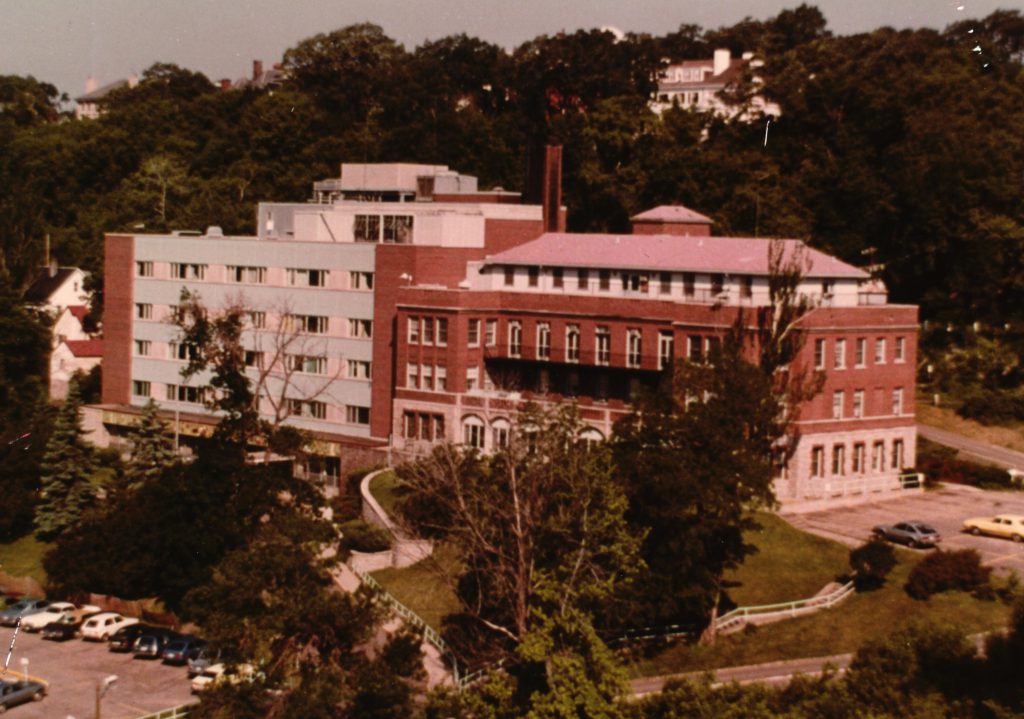for kids

From the archives: Children's Minnesota in the 1950s
The history of Children’s Minnesota is much more than buildings, names and dates. Who were the people behind the facts? What were their struggles and triumphs?
In honor of our 100th anniversary, every month in 2024 we’ll share compelling stories from the Children’s Minnesota archives. Each month will feature a different decade.
Here, we continue with the 1950s, which saw increasing momentum to build a children’s hospital in Minneapolis. In St. Paul, “the marvels of modern surgery” saved a newborn’s life and Children’s Hospital resolved some growing pains, for a little while at least.
Jump back in time and read about Children’s Minnesota in the 1940s, the 1930s and the 1920s.
The birth of a Minneapolis children’s hospital
In the 1950s, efforts to build a children’s hospital in Minneapolis started to gather steam.
A group of doctors formed the Minneapolis Pediatric Society to focus on creating a hospital. They sought advice from Dr. Walter Ramsey, who had founded Children’s Hospital in St. Paul in 1924. Ramsey shared that he had leaned on a women’s community organization, the St. Paul Junior League, to help fundraise for the opening of the St. Paul hospital. The Minneapolis pediatricians took that advice and enlisted the help of the Junior League of Minneapolis.
By 1953, several Junior League members had created the first hospital board of trustees. It was comprised entirely of women, all active in the community. The women held their first major board meeting in November 1953. They hadn’t raised any money yet, so they each pitched in $5 to buy supplies.
The importance of these community members cannot be overstated according to a history booklet about the creation of Minneapolis’ children’s hospital:
“‘When you think about these hundreds and hundreds of women volunteers working in the community in the 1950s and 1960s for something that didn’t exist, rallying to this idea of a special place to take better care of children, it is truly amazing what was accomplished,’ a number of the early board members reminisced. If this had not happened, many believe the hospital would never have been built.”

The rest of the 1950s was devoted to fundraising, looking for a hospital site and educating the public about the need for a children’s hospital. The long, slow process of creating a Minneapolis pediatric hospital was finally underway.
“Marvels of modern surgery”
In 1956, a newspaper article relayed how a newborn and her father were flown from Watertown, Minnesota, to Children’s Hospital in St. Paul to be treated for a life-threatening condition.
The newborn, Elizabeth Ruth Wight, wasn’t able to eat because neither her esophagus nor her trachea were properly connected to her stomach. Children’s Hospital staff performed two surgeries and Elizabeth Ruth was eventually pronounced “completely normal.”
The article notes that three other similar surgeries were performed in 1956, with one child coming from as far away as Florida.

(Photo caption) A month old tomorrow, Elizabeth Ruth Wight is held by her big sister, Jane Ann, 6, while Ernie, 4, contemplates what goes on. Elizabeth Ruth owes her life to the marvels of modern surgery. The lack of connection between her esophagus and the stomach and an abnormal connection between the trachea and stomach caused her to have two operations. They are children of Mr. and Mrs. Ernie Wright, 713 2nd St. N.W. (Public Opinion Photo)
Prompt Diagnosis, Modern Surgery
Life of Watertown Baby Saved
A tiny Watertown baby who will be a month old Wednesday owes her life to prompt diagnosis and marvels of modern surgery.
Elizabeth Ruth Wight, daughter of Mr. And Mrs. Ernie Wight, 713 2nd St. N.W., was born at a local hospital Nov. 5. On Nov. 6, efforts to feed her failed and her physician began a series of x-rays to determine the cause.
By Nov. 7, the physician had diagnosed the trouble as tracheal esophageal fistula or a lack of connection between the esophagus and the stomach. A second abnormality was also found. That was a connection between the trachea and the stomach.
Tiny Elizabeth Ruth, her father and a nurse flew to St. Paul, Minn., on Thursday, Nov. 8, where the first of two operations were performed at Children’s Hospital that day. Before leaving Watertown, the baby had been fed subcutaneously by injections of dextrose and glucose under the skin. After arrival at Children’s Hospital, the baby was fed intravenously.
The initial operation corrected the abnormalities. A second operation was performed to place a tube in the baby’s stomach through which she was fed until Nov. 18, the date that oral feeding was started. The tube was not removed until Nov. 26 in the event that complications in oral feeding developed.
On Nov. 29, the Wight baby was returned to Watertown. She is completely normal today. This was the fourth time during 1956 that surgery for this type of abnormality was performed at Children’s Hospital. One of the three other babies was from Florida, indicating the rarity of this condition.
Growing pains
By the early 1950s, the Children’s Hospital in St. Paul was seeing more and more patients, and its building at 311 Pleasant Ave. was about 25 years old. Dr. Ramsey noted, “For several years the hospital has suffered from a lack of space and a number of other things necessary to make it a thoroughly modern teaching institution.”
Some thought it would be best to relocate Children’s Hospital altogether to a campus close to where the Minnesota History Center and St. Joseph Hospital stand today. Other children’s hospitals that were consulted advised Children’s Hospital to keep its independence and remain on its current site. And that’s what they did.
A survey determined that an expansion would cost $2.25 million, so a major fundraising campaign was launched in 1953.

Fundraising campaign report

The Best Part of Your Heart Says, “GIVE!”
Special Gifts Team Workers
Bulletin No. VI
WHY IS THE STORY OF THE HOSPITAL SO HARD TO TELL?
Unfortunately, your average prospect thinks only of hospitals when he, or one of his family, is sick. Unlike the Community Chest or other annual deficit campaigns, the hospital’s importance as a charity seldom receives full public attention…if has been thirty years in the case of Children’s Hospital. Yet care of the sick child is perhaps the most important charity after our churches. This means WE MUST KNOW AND TELL THE STORY. Remember, too, that Children’s Hospital receives no assistance from the Community Chest.
WHAT MORE CAN BE DONE TO INCREASE OUR SALESMANSHIP?
Work in pairs: You will save time and present the story better by working together.
Make calls at night: At someone’s home, you will be received with a social rather than a business attitude and they will appreciate that you are working at night on your own time.
Never telephone for a subscription. Talk in terms of twelve quarterly payments: i.e. $100.00 a quarter over two years and nine months, rather than $1200.00 total.
WHAT QUICKLY DESCRIBES THE REAL BED NEED FOR CHILDREN’S HOSPITAL?
Over the last twenty-five years or so, there has been no major increase in beds for children in St. Paul. However, anyone familiar with the school situation is aware of the increase in our school population.
WHERE WILL BE THE NEXT MEETING?
LUNCHEON
Wednesday, September 14
12:15 p.m.
Ballroom (2nd floor)
Lowry Hotel
By 1957, enough money was raised to break ground on the expansion and in 1959, the addition was done. It was named the Lang Wing in honor of Theodora H. Lang, the first woman president of the board of trustees. Mrs. Lang served on the board for more than 60 years.


It wouldn’t be long, though, until the St. Paul hospital would outgrow its new quarters and would start a quest for a brand-new building and site.
Stay tuned to our From the Archives blogs! Next month will feature Children’s Minnesota in the 1960s.
Celebrating a century of care: Children’s Minnesota turns 100
Children’s Minnesota has been here for 100 years. And it’s all because of you: the people who bring their kids here, the ones who work here, the partners who refer their young patients for specialty treatment, the donors who support us, and the community who rallies around the families in our hospitals. Join us in celebrating a century of care — and a bright, healthy future for Minnesota kids.